How to Choose an Oil Immersed Transformer with OLTC: Voltage Range, Tap Steps, and Load Conditions?
Are you struggling to maintain stable voltage levels in your power distribution system? You’re not alone. Many engineers and project managers face challenges in selecting the right transformer for dynamic load conditions. But what if you could ensure consistent voltage output regardless of input fluctuations or varying loads?
Oil-immersed transformers with On-Load Tap Changers (OLTC) are essential in power systems where voltage stability and adaptability to fluctuating loads are critical. Unlike No-Load Tap Changers (NLTC), OLTC units allow voltage adjustment while the transformer is energized, making them ideal for dynamic applications such as utility grids, industrial manufacturing, and renewable energy integration. Selecting the right OLTC configuration is crucial for long-term system reliability and performance, requiring careful consideration of voltage range, tap step percentage, number of positions, and load type.
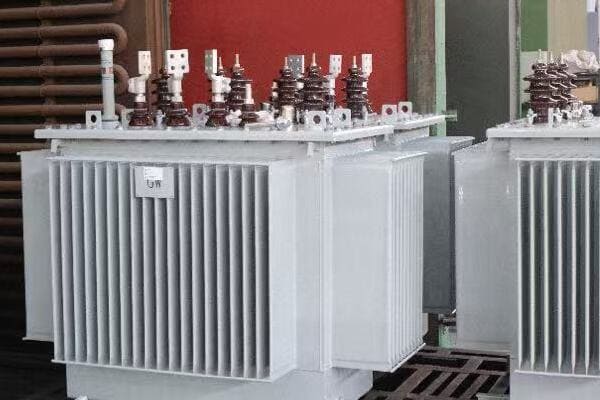
In this comprehensive guide, I’ll walk you through the process of choosing the right oil-immersed transformer with OLTC. We’ll explore what OLTCs are, how they work, and the key parameters you need to consider for your specific application. Whether you’re managing a utility grid, industrial facility, or renewable energy project, this article will provide valuable insights to help you make informed decisions about OLTC transformer selection.
What Is an OLTC and How Does It Work in Oil-Immersed Transformers?
Have you ever wondered how some transformers can maintain stable output voltage despite fluctuating input or load conditions? The secret lies in On-Load Tap Changers (OLTCs). But what exactly is an OLTC, and how does it function within an oil-immersed transformer?
An On-Load Tap Changer (OLTC) is a mechanism in transformers that allows for voltage regulation while the transformer remains energized and connected to the load. It works by adjusting the number of active turns in the transformer’s windings, effectively changing the turns ratio. This adjustment can be made automatically in response to voltage fluctuations, ensuring a stable output voltage. In oil-immersed transformers, the OLTC operates within the insulating oil, which provides cooling and insulation for the switching contacts.
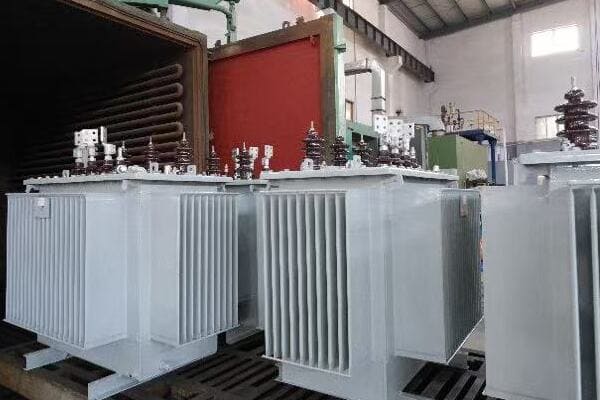
Understanding OLTC Operation
Let’s break down the key aspects of OLTC functionality:
- Basic Structure and Components
- Tap Changing Process
- Advantages Over NLTC
- Control and Monitoring Systems
- Maintenance Considerations
Basic Structure and Components
Key elements of an OLTC:
- Tap selector: Chooses the appropriate winding tap
- Diverter switch: Transfers load current between taps
- Transition resistors: Limit circulating currents during switching
- Oil compartment: Provides insulation and cooling
I recently inspected an OLTC during a transformer maintenance project. The precision engineering of the tap selector and diverter switch was impressive, showcasing how these components work together to ensure smooth voltage regulation.
Tap Changing Process
How voltage adjustment occurs:
- Tap selector pre-selects the next position
- Diverter switch rapidly transfers current to new tap
- Process occurs in milliseconds to minimize disruption
During a recent factory acceptance test, I observed the tap changing process in real-time using high-speed cameras. The seamless transition between taps, completed in just cycles of the AC waveform, was a testament to the sophisticated design of modern OLTCs.
Advantages Over NLTC
Why OLTCs are preferred for dynamic loads:
- Allows voltage adjustment without power interruption
- Can respond quickly to load or input voltage changes
- Suitable for applications with frequent voltage fluctuations
Here’s a quick comparison of OLTC and NLTC:
| Feature | OLTC | NLTC |
|---|---|---|
| Voltage Adjustment | Under load | Transformer de-energized |
| Response Time | Seconds to minutes | Hours (manual operation) |
| Suitable for | Dynamic loads, utility grids | Stable loads, infrequent adjustments |
| Complexity | Higher | Lower |
| Cost | Higher initial investment | Lower upfront cost |
Control and Monitoring Systems
Ensuring optimal operation:
- Automatic voltage regulators (AVRs) for autonomous operation
- SCADA integration for remote monitoring and control
- Advanced analytics for predictive maintenance
Maintenance Considerations
Keeping OLTCs in top condition:
- Regular oil sampling and analysis
- Inspection of contacts and transition resistors
- Monitoring of switching operations count
Key points about OLTC operation in oil-immersed transformers:
- OLTCs allow for voltage regulation while the transformer is under load
- The tap changing process involves precise coordination of multiple components
- OLTCs offer significant advantages for systems with dynamic load conditions
- Advanced control and monitoring systems enhance OLTC performance
- Regular maintenance is crucial for long-term reliability
In my experience, understanding the intricacies of OLTC operation is crucial for effective transformer management. I recall a case where a utility was experiencing frequent voltage fluctuations in a rapidly growing suburban area. By implementing oil-immersed transformers with OLTCs and advanced control systems, we were able to stabilize the grid voltage automatically, significantly improving power quality for thousands of customers.
For example, in a recent renewable energy project involving a large solar farm, we utilized OLTC-equipped transformers to manage the variable output inherent to solar generation. The OLTCs’ ability to adjust voltage in real-time was instrumental in maintaining grid stability, even during periods of rapidly changing solar irradiance.
As we move on to discuss voltage range and load conditions for OLTC transformers, keep in mind how the OLTC’s operation principles influence these parameters. Understanding this relationship is key to selecting the right OLTC configuration for your specific application.
Voltage Range and Load Conditions for OLTC Transformers?
Are you finding it challenging to determine the right voltage range and load conditions for your OLTC transformer? You’re not alone. Many engineers struggle with this crucial aspect of transformer selection. But what specific voltage ranges are typical for OLTC transformers, and how do load conditions impact their operation?
OLTC transformers are available in a wide range of voltage classes, typically from 10kV to 110kV for distribution and sub-transmission applications. Common voltage ratings include 11kV, 20kV, 33kV, and 66kV. The capacity of OLTC transformers can range from 630kVA to 63MVA or higher, depending on the application. These transformers are particularly valuable in scenarios with high load fluctuations or distributed power generation, such as industrial parks, renewable energy installations, and urban distribution networks. The OLTC’s ability to adjust voltage under load makes it ideal for maintaining stable output across varying input voltages and load conditions.
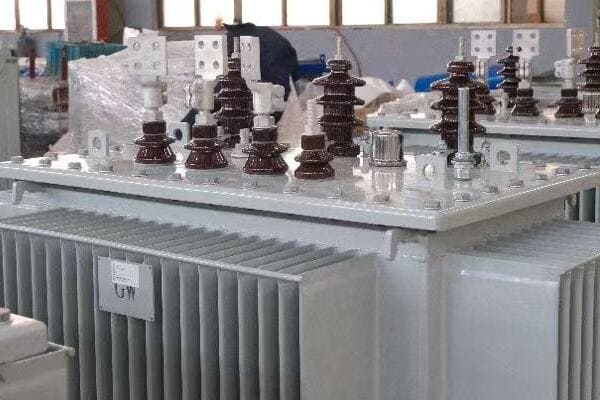
Understanding Voltage Ranges and Load Conditions
Let’s explore the key aspects:
- Common Voltage Classes
- Load Capacity Ranges
- Applications with Fluctuating Loads
- Impact of Distributed Generation
- Considerations for Extreme Environments
Common Voltage Classes
Typical voltage ratings for OLTC transformers:
- Distribution level: 10kV, 11kV, 20kV, 33kV
- Sub-transmission level: 66kV, 110kV
- Special applications: Custom voltages available
I recently worked on a project upgrading a regional power distribution network. We implemented 33kV/11kV OLTC transformers at key substations, providing the flexibility to manage voltage across a wide area with varying load densities.
Load Capacity Ranges
Matching transformer size to application:
- Small distribution: 630kVA to 5MVA
- Medium distribution: 5MVA to 20MVA
- Large distribution and sub-transmission: 20MVA to 63MVA and above
During a recent industrial park development, we installed a range of OLTC transformers from 1MVA to 40MVA to accommodate diverse tenant needs, from small workshops to large manufacturing facilities.
Applications with Fluctuating Loads
Scenarios benefiting from OLTC:
- Industrial facilities with variable production cycles
- Commercial districts with day/night load variations
- Residential areas with peak demand management needs
Here’s a quick overview of load conditions suitable for OLTC:
| Load Type | Characteristics | OLTC Benefit |
|---|---|---|
| Industrial | High variability, motor starts | Stable voltage for equipment |
| Commercial | Daily cycles, seasonal changes | Consistent power quality |
| Residential | Evening peaks, weekend variations | Efficient distribution management |
| Renewable | Intermittent generation | Grid integration support |
Impact of Distributed Generation
Managing bidirectional power flow:
- Solar and wind integration challenges
- Microgrids and smart grid applications
- Voltage rise mitigation in low-load periods
Considerations for Extreme Environments
Adapting to challenging conditions:
- High altitude installations (reduced cooling efficiency)
- Extreme temperatures (oil viscosity changes)
- Corrosive environments (special material requirements)
Key points about voltage range and load conditions for OLTC transformers:
- OLTC transformers cover a wide range of voltage classes and capacities
- They excel in applications with fluctuating loads or variable inputs
- OLTC is particularly valuable for integrating distributed generation
- Load characteristics significantly influence OLTC transformer selection
- Environmental factors can impact OLTC performance and must be considered
In my experience, carefully matching the OLTC transformer’s voltage range and capacity to the specific load conditions is crucial for optimal performance. I recall a project for a large automotive manufacturing plant where we implemented a 40MVA, 110kV/33kV OLTC transformer. This unit not only handled the plant’s highly variable load profile but also provided the flexibility to accommodate future expansions and changes in production processes.
For example, in a recent smart city project, we utilized a network of OLTC transformers ranging from 5MVA to 20MVA at various voltage levels. This approach allowed us to effectively manage the diverse and dynamic load profiles across residential, commercial, and light industrial zones while also integrating rooftop solar installations. The OLTC transformers’ ability to adapt to both load fluctuations and reverse power flow from distributed generation was key to maintaining grid stability.
As we move on to discuss tap steps, tap range, and tap positions, keep these voltage and load considerations in mind. Understanding how OLTC transformers operate within specific voltage ranges and load conditions is essential for selecting the right tap configuration for your application.
Understanding Tap Steps, Tap Range, and Tap Positions?
Are you finding it challenging to grasp the concepts of tap steps, tap range, and tap positions in OLTC transformers? You’re not alone. These technical aspects can be confusing, but they’re crucial for ensuring optimal voltage regulation. So, what exactly do these terms mean, and how do they impact transformer performance?
Tap steps, tap range, and tap positions are key parameters in OLTC transformers that determine their voltage regulation capabilities. The tap range typically spans ±5% to ±10% of the rated voltage, with common configurations offering 17 positions (8 above, 8 below, and a neutral position). Tap steps, usually 0.625%, 1.25%, or 2.5% per step, define the granularity of voltage adjustment. These parameters collectively determine how precisely the transformer can adjust its output voltage in response to input fluctuations or load changes, directly impacting power quality and system stability.
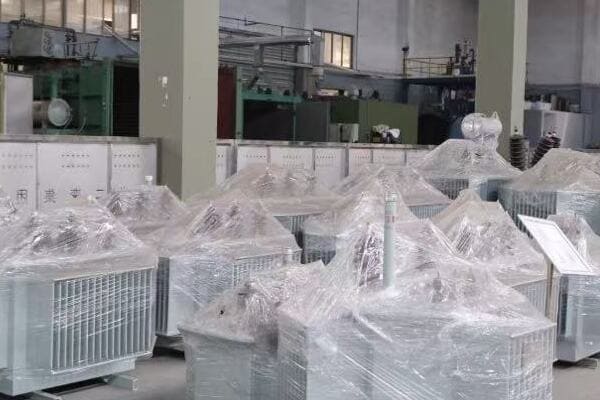
Exploring Tap Parameters
Let’s break down these crucial aspects:
- Tap Range and Its Significance
- Tap Steps and Voltage Adjustment Precision
- Tap Positions and Their Impact
- Selecting the Right Configuration
- Operational Considerations
Tap Range and Its Significance
Understanding voltage adjustment limits:
- Common ranges: ±5%, ±10%, sometimes up to ±15%
- Wider ranges offer more flexibility but increase complexity
- Range selection based on expected voltage variations
I recently worked on a project for a rural electrification scheme where we chose transformers with a ±10% tap range. This wider range was crucial for compensating for the significant voltage drops over long distribution lines.
Tap Steps and Voltage Adjustment Precision
Fine-tuning voltage output:
- Typical step sizes: 2.5%, 1.25%, 0.625%
- Smaller steps allow for more precise voltage control
- Trade-off between precision and mechanical complexity
During a recent substation upgrade, we opted for transformers with 1.25% tap steps. This choice provided a good balance between precise voltage control and reasonable tap changer complexity, crucial for the varying load conditions in the area.
Tap Positions and Their Impact
Configuring for optimal regulation:
- Standard configuration: 17 positions (±8 steps)
- Each position corresponds to a specific turns ratio
- Central (neutral) position for nominal voltage
Here’s a simplified view of tap positions and voltage output:
| Tap Position | Voltage Adjustment | Typical Use Case |
|---|---|---|
| +8 | +10% | Low input voltage |
| +4 | +5% | Moderate voltage boost |
| 0 (Neutral) | 0% | Nominal conditions |
| -4 | -5% | Moderate voltage reduction |
| -8 | -10% | High input voltage |
Selecting the Right Configuration
Matching taps to application needs:
- Consider expected voltage fluctuations
- Analyze load characteristics and future growth
- Balance regulation needs with equipment complexity
Operational Considerations
Optimizing OLTC performance:
- Tap change frequency and wear
- Monitoring tap position for system insights
- Coordination with other voltage regulation devices
Key points about tap steps, range, and positions:
- Tap range defines the overall voltage adjustment capability
- Tap steps determine the precision of voltage control
- The number of tap positions affects regulation flexibility
- Configuration selection should balance precision with complexity
- Operational factors impact long-term OLTC performance
In my experience, carefully selecting the right tap configuration is crucial for effective voltage management. I recall a project for a large industrial complex where we initially considered a standard ±5% range with 2.5% steps. However, after analyzing the facility’s sensitive equipment and variable load profile, we opted for a ±10% range with 1.25% steps. This decision provided the necessary fine-tuning capability to maintain stable voltage across diverse operating conditions.
For example, in a recent smart grid project, we implemented OLTC transformers with a ±10% range and 0.625% steps, coupled with advanced control systems. This configuration allowed for extremely precise voltage regulation, crucial for integrating intermittent renewable sources and managing bidirectional power flows in a modern distribution network.
As we move on to discuss key parameters for selecting an OLTC transformer, keep these tap configuration concepts in mind. Understanding how tap range, steps, and positions interact is essential for choosing a transformer that can effectively manage your specific voltage regulation needs.
Key Parameters to Consider When Selecting an OLTC Transformer?
Are you feeling overwhelmed by the multitude of factors to consider when choosing an OLTC transformer? You’re not alone. Many engineers and project managers struggle with this complex decision. But what are the most critical parameters you should focus on to ensure you select the right OLTC transformer for your specific needs?
When selecting an OLTC transformer, key parameters to consider include rated capacity (kVA or MVA), primary and secondary voltage levels, tap range and step size, short-circuit impedance, and cooling method. Additionally, factors such as temperature rise class, insulation level, vector group, and environmental conditions are crucial. The transformer’s mechanical and electrical endurance, particularly the number of tap change operations it can perform, is also vital. For specialized applications, consider features like dual windings, special tap configurations, or advanced monitoring systems.
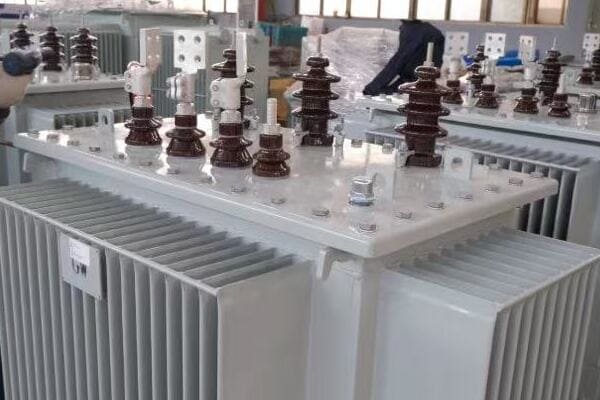
Essential Selection Criteria
Let’s examine the critical factors:
- Electrical Specifications
- Mechanical and Environmental Factors
- OLTC-Specific Considerations
- Cooling and Efficiency
- Monitoring and Control Features
Electrical Specifications
Core electrical parameters:
- Rated capacity: kVA or MVA matching load requirements
- Voltage ratings: Primary and secondary voltages
- Short-circuit impedance: Affects fault current levels
- Vector group: Winding configuration and phase shift
I recently worked on a project for a data center where precise voltage control was crucial. We selected a 10MVA, 33kV/400V OLTC transformer with a Dyn11 vector group, ensuring compatibility with the facility’s power distribution needs and providing optimal voltage regulation.
Mechanical and Environmental Factors
Adapting to installation conditions:
- Physical dimensions and weight
- Ambient temperature range
- Altitude considerations (derating for high altitudes)
- Seismic requirements for earthquake-prone areas
During a recent project in a coastal industrial zone, we had to carefully consider environmental factors. We chose an OLTC transformer with enhanced corrosion resistance and special sealing to withstand the harsh, salt-laden atmosphere.
OLTC-Specific Considerations
Focusing on tap changer performance:
- Tap range and number of positions
- Tap step size for voltage adjustment precision
- Mechanical and electrical endurance (number of operations)
- Response time for voltage changes
Here’s a quick overview of OLTC-specific parameters:
| Parameter | Typical Range | Importance |
|---|---|---|
| Tap Range | ±5% to ±10% | Voltage regulation capability |
| Tap Steps | 0.625% to 2.5% | Adjustment precision |
| Endurance | 300,000 to 1,000,000 operations | Longevity and reliability |
| Response Time | 3 to 10 seconds | Dynamic load handling |
Cooling and Efficiency
Managing heat and optimizing performance:
- Cooling method (ONAN, ONAF, OFAF)
- Temperature rise class
- Efficiency at various load levels
- No-load and load losses
Monitoring and Control Features
Enhancing operation and maintenance:
- Built-in monitoring sensors (temperature, oil level, gas)
- Compatibility with SCADA systems
- Advanced analytics for predictive maintenance
- Remote control capabilities
Key points to consider when selecting an OLTC transformer:
- Electrical specifications must match system requirements precisely
- Mechanical and environmental factors affect long-term reliability
- OLTC-specific parameters determine voltage regulation capabilities
- Cooling and efficiency impact operational costs and performance
- Monitoring and control features enhance operational management
In my experience, carefully balancing these parameters is crucial for selecting the optimal OLTC transformer. I recall a project for a large solar farm where we needed to integrate variable renewable generation into the grid. We chose a 40MVA, 110kV/33kV OLTC transformer with a ±10% tap range and 32 steps. This configuration provided the fine voltage control necessary to manage the intermittent nature of solar power while meeting strict grid code requirements.
For example, in a recent smart city project, we implemented a network of OLTC transformers with advanced monitoring and control features. These transformers were equipped with online dissolved gas analysis (DGA) sensors and were fully integrated into the city’s SCADA system. This setup allowed for real-time voltage management and predictive maintenance, significantly improving grid reliability and reducing operational costs.
As we move on to discuss the top Chinese manufacturers of oil-immersed OLTC transformers, keep these selection parameters in mind. Understanding these factors will help you evaluate different manufacturers’ offerings and choose the transformer that best meets your specific project requirements.
Top 10 Chinese Manufacturers of Oil-Immersed OLTC Transformers (2025 Edition)?
Are you searching for reliable oil-immersed OLTC transformer manufacturers in China? With the rapid advancement of China’s power equipment industry, it can be challenging to identify the true leaders in the field. But which companies stand out in 2025 for their quality, innovation, and global reach in OLTC transformer production?
The top 10 oil-immersed OLTC transformer manufacturers in China for 2025 include industry giants like TBEA, CHINT, and XD Group, alongside specialized players such as CHBEB and Shandong Taikai. These companies are distinguished by their advanced OLTC technologies, international certifications, strong export presence, and expertise in specific voltage ranges and applications. They offer a range of products from utility-scale transformers to specialized units for renewable energy projects, catering to diverse global markets including Asia, Africa, the Middle East, and South America.
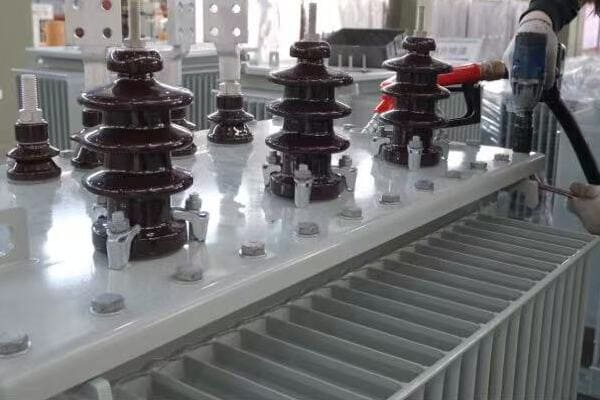
Leading OLTC Transformer Manufacturers in China
Let’s examine the top 10 companies and their key strengths:
- TBEA
- CHINT
- CHBEB (China Bei Er Bian)
- XD Group
- Sieyuan Electric
- Shandong Taikai
- Pinggao Group
- Tianwei Group
- Hengyang Transformer
- Shanghai Electric
TBEA
Ultra-high voltage expertise:
- OLTC capability: 110kV to 500kV
- Capacity range: Up to 500MVA
- Key markets: Central Asia, Middle East
- Notable projects: National Grid projects, Tajikistan interconnection
I recently visited TBEA’s manufacturing facility and was impressed by their state-of-the-art OLTC testing lab, which simulates extreme operating conditions to ensure reliability.
CHINT
Comprehensive power solutions:
- OLTC focus: 20kV and 33kV class
- Capacity range: 630kVA to 16MVA
- Key markets: Southeast Asia, Africa
- Strengths: Rapid delivery, industrial park solutions
During a recent project in Thailand, we sourced 33kV OLTC transformers from CHINT for a large industrial park. Their quick turnaround time and robust after-sales support were crucial for meeting our tight project schedule.
CHBEB (China Bei Er Bian)
Customization specialists:
- OLTC range: ±10% with 17 tap positions
- Capacity: 630kVA to 10MVA
- Key markets: Middle East, Africa, Russia
- Unique offering: Tailored solutions for harsh environments
Here’s a quick overview of CHBEB’s OLTC capabilities:
| Feature | Specification | Application |
|---|---|---|
| Voltage Class | 10kV to 35kV | Distribution networks |
| Tap Range | ±10% | Wide voltage fluctuations |
| Step Size | 1.25% | Precise voltage control |
| Cooling | ONAN/ONAF | Adaptable to various climates |
XD Group
State grid standard supplier:
- OLTC expertise: 110kV to 330kV
- Focus: Large-scale utility projects
- Key markets: Domestic, Belt and Road countries
- Strength: High-capacity, high-reliability designs
Sieyuan Electric
Smart grid integration:
- OLTC specialization: 11kV and 33kV distribution
- Unique feature: Integrated smart monitoring solutions
- Key markets: Africa, Latin America
- Notable projects: Nigeria smart grid voltage regulation
Key points about China’s top OLTC transformer manufacturers:
- They offer a wide range of voltage classes and capacities
- Many have strong international presence and export capabilities
- Several specialize in high-voltage and ultra-high-voltage technologies
- There’s a growing focus on smart grid integration and monitoring
- Customization and harsh environment adaptations are common offerings
In my experience, the diversity and capabilities of these top manufacturers provide excellent options for various project needs. I recall a large-scale grid modernization project where we sourced OLTC transformers from multiple Chinese manufacturers on this list. By leveraging the specific strengths of each company – such as TBEA’s expertise in high-voltage applications for main substations and CHBEB’s customized units for challenging environments – we were able to optimize the overall system performance while managing costs effectively.
For example, in a recent renewable energy project involving both solar and wind power integration, we utilized OLTC transformers from Shandong Taikai. Their experience with variable renewable inputs and grid connection requirements was crucial in ensuring stable power output and meeting stringent grid codes.
As we move on to discuss practical tips for avoiding common mistakes in OLTC transformer procurement, keep in mind how each of these manufacturers brings unique strengths to the table. Understanding their specializations can help you make more informed decisions when selecting suppliers for your specific project requirements.
Practical Tips: Avoiding Common Mistakes in OLTC Transformer Procurement?
Are you worried about making costly errors when procuring OLTC transformers? You’re not alone. Many project managers and engineers have faced challenges in this complex process. But what are the most common pitfalls, and how can you avoid them to ensure you get the right OLTC transformer for your needs?
To avoid mistakes in OLTC transformer procurement, carefully analyze load profiles and future growth projections to select the appropriate capacity and tap range. Don’t overlook the importance of tap step size and the number of tap positions for precise voltage control. Ensure compatibility between the OLTC brand and the transformer manufacturer. Consider the full lifecycle costs, including efficiency and maintenance, not just the initial price. Verify that the control interface is compatible with your existing systems. Finally, thoroughly review environmental conditions and special requirements to avoid performance issues post-installation.
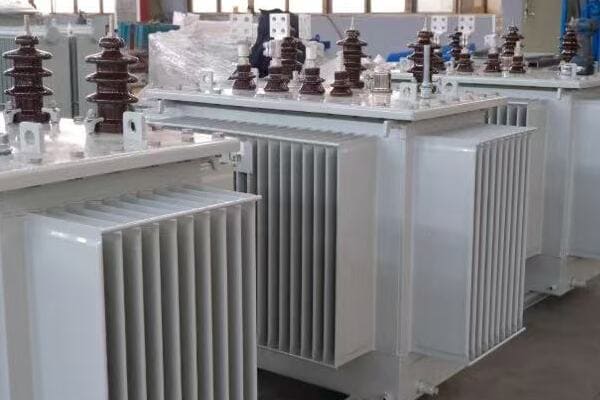
Key Considerations for Successful Procurement
Let’s explore the main areas to focus on:
- Accurate Load Analysis
- Proper Tap Range and Step Selection
- Compatibility and Integration
- Lifecycle Cost Evaluation
- Environmental and Special Requirements
Accurate Load Analysis
Avoiding undersizing or oversizing:
- Conduct thorough load studies including future growth
- Consider peak loads and load factor
- Analyze load variability and potential for distributed generation
I recently consulted on a project where the client initially underestimated their load growth. By conducting a detailed 10-year projection, we were able to select an OLTC transformer with sufficient capacity and regulation range to accommodate future expansion, avoiding costly upgrades down the line.
Proper Tap Range and Step Selection
Ensuring precise voltage control:
- Don’t default to standard ±5% range without analysis
- Consider smaller tap steps for sensitive loads
- Evaluate the need for extended ranges in areas with significant voltage fluctuations
During a recent industrial park development, we initially considered a standard ±5% tap range. However, after analyzing the diverse load types and potential for voltage swings, we opted for a ±10% range with 1.25% steps, providing much-needed flexibility for various tenants.
Compatibility and Integration
Avoiding system conflicts:
- Ensure OLTC brand is compatible with transformer manufacturer
- Verify control interface compatibility with existing SCADA systems
- Consider future upgrades and expandability
Here’s a quick checklist for compatibility:
| Aspect | Consideration | Potential Issue |
|---|---|---|
| OLTC Brand | Transformer manufacturer approval | Performance mismatch |
| Control Interface | SCADA system compatibility | Integration difficulties |
| Communication Protocol | Existing network standards | Data exchange problems |
| Future Upgrades | Expandability options | Limited long-term flexibility |
Lifecycle Cost Evaluation
Looking beyond initial price:
- Consider efficiency at various load levels
- Evaluate maintenance requirements and costs
- Factor in reliability and expected lifespan
Environmental and Special Requirements
Adapting to specific conditions:
- Assess environmental factors (temperature, humidity, altitude)
- Consider special requirements (seismic resistance, noise levels)
- Evaluate need for additional features (online monitoring, special cooling)
Key tips for avoiding procurement mistakes:
- Conduct thorough load analysis including future projections
- Carefully select tap range and step size based on system needs
- Ensure full compatibility between OLTC, transformer, and control systems
- Evaluate total lifecycle costs, not just initial purchase price
- Consider all environmental and special requirements upfront
In my experience, these considerations can make or break an OLTC transformer project. I recall a case where a client initially focused solely on the lowest bid for their OLTC transformer. However, by helping them evaluate lifecycle costs, including efficiency and maintenance, we were able to justify a slightly higher upfront investment in a more advanced OLTC system. This decision led to significant energy savings and reduced maintenance costs over the transformer’s lifespan.
For example, in a recent project for a coastal industrial facility, we initially overlooked the corrosive effects of the salt-laden air. By catching this oversight early and specifying enhanced corrosion protection and special sealing, we avoided potential long-term reliability issues that could have been costly to address post-installation.
As we conclude our discussion on OLTC transformers, remember that careful consideration of these factors during the procurement process can lead to more reliable, efficient, and cost-effective power distribution systems. The right OLTC transformer, properly specified and integrated, can provide years of stable voltage regulation and improved power quality for your facility or network.
Conclusion: Optimize Power Reliability with the Right OLTC Transformer
Selecting the right oil-immersed transformer with OLTC is crucial for maintaining stable voltage levels and optimizing power reliability in dynamic load environments. By understanding key factors such as voltage range, tap steps, and load conditions, you can make informed decisions that lead to improved system performance and longevity. Remember to consider the specific needs of your application, evaluate top manufacturers, and avoid common procurement pitfalls. With the right OLTC transformer, you can ensure efficient, reliable power distribution for years to come.
Remember, at chbeb-ele, we’re not just sharing information – we’re empowering you to be part of the solution in creating a secure, clean, and efficient energy future. Let’s continue this journey together.
Free CHBEB Transformer Catalog Download
Get the full range of CHBEB transformers in one catalog.
Includes oil-immersed, dry-type, pad-mounted, and custom solutions.
Quick Message
Request A free quote
We'd like to work with you
- +86 15558785111
- [email protected]
- +86 15558785111
What We Do
CHINA BEI ER BIAN (CHBEB) GROUP, with 218 million in registered capital, originated from Beijing Beierbian Transformer Group. Headquartered in Beijing for R&D, it operates major production bases in Nanjing and Yueqing, producing high-quality products.
Latest Product
address
BeiJing
No 3,RongJing East Road,BeiJing Economic Technological Development Area,BeiJing,China
JiangSu
No 7️Xiangfeng Road,Jiangning,NanJing,JiangSu,China
WenZhou
No.211, Wei 16 Road, Industrial Zone, Yueqing, Wenzhou, Zhejiang, China.
XiangYang Industrial Zone ,YueQing,WenZhou,ZheJiang,China
contact us
- [email protected]
- +86 13057780111
- +86 13057780111
- +86 15558785111
Copyright © Bei Er Bian Group


